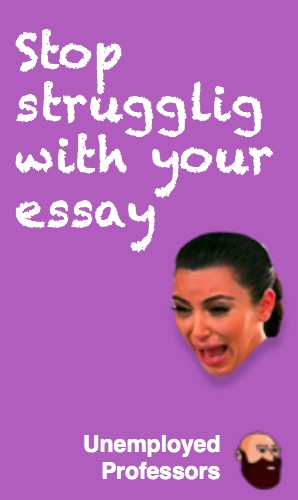 As students finalize their decision on the college that they will attend, begin the arduous process of making living arrangements, in conjunction to deciding on the materials that they will bring with them, they will be presented with an experience that some have yet to encounter –the financial aid process. Completing the Free Application for Federal Student Aid (FAFSA), deciding on how much money to take out in loans, determining if a co-signer would be the most advantageous to reduce their long-term debt and finalizing their decision by signing the elusive promissory note; all of these hoops that a novel university student must jump through may seem daunting; yet, it is a necessary aspect of the university experience that the majority of students will encounter.
As students finalize their decision on the college that they will attend, begin the arduous process of making living arrangements, in conjunction to deciding on the materials that they will bring with them, they will be presented with an experience that some have yet to encounter –the financial aid process. Completing the Free Application for Federal Student Aid (FAFSA), deciding on how much money to take out in loans, determining if a co-signer would be the most advantageous to reduce their long-term debt and finalizing their decision by signing the elusive promissory note; all of these hoops that a novel university student must jump through may seem daunting; yet, it is a necessary aspect of the university experience that the majority of students will encounter.
Let’s face it, only a minority of university students come from affluent backgrounds and the rest of us are pursuing a college education as a means of undergoing intra-generational mobility. We want to have a better life than our parents could provide and the only means to accomplish this is by increasing one’s understanding of the world. Whether one desires to improve themselves through the humanities, social or physical sciences, the decision to pursue a college education is a significant step that should not be decided on a whim. There are severe consequences for individuals who do not sufficiently analyze their current life situation to determine if a college education is the most appropriate. I am a tenured professor at a mid-tier University and have unfortunately seen a large portion of the student population pursue higher education to party 24/7 for 4+ years. That is not saying that one should not enjoy the college experience while they are bettering themselves, but deciding to accumulate more than $100,000 in debt to fulfill a need to party should not be the main determinant for such a serious endeavor. The university system in the United States is more or less a ‘legal Mafia’, whereby they are allowed to charge absorbent fees for a service that has been deemed a human right in other first world nations. These expenses cannot be paid out of pocket by most and thus, student loans are the only option.
If the decision to attend a university is the most appropriate, then one must fully understand the different types of financial aid. The below is a brief summary of the different types of loans provided by lenders.
- A subsidized loan is awarded to a student based upon their financial need. Filling out the FAFSA requires a student to answer general questions about their income, their family’s contribution, and other factors that may affect their financial viability. This information is used to calculate the Expected Family Contribution (EFC) and the amount of financial aid awarded is not subjected to interest while attending school at least half-time. Furthermore, a student is provided with a six-month grace period after they leave school and are provided with the opportunity to defer their loans if they are experiencing financial hardship. Alas, a student is responsible for paying any interest that accrues during the grace period and is only provided a certain number of deferments depending upon their career option, i.e. working in a non-profit provides one with greater flexibility for repaying their loans.
- An unsubsidized loan is NOT based on financial need and any individual who submits a FAFSA can obtain financial aid through this loan program. Unfortunately, interest begins accruing immediately after the loans have been disbursed and the interest is capitalized onto the principal. This means that any grace period, deferment or forbearance that a student wishes to utilize will be subjected to accruing interest and this can significantly increase the amount of money that they will be required to repay.
- A private loan is provided by a third party that is not directly associated with the federal government. As such, the rules and regulations associated with the loan agreement are vastly different from subsidized and unsubsidized loans. This (typically) results in higher interest rates, less flexibility with repayment options and fewer resources that are provided by the federal government. Although the amount of money that a student is required to pay for a higher education is absurd in the United States, increasing the educational status of its citizens is advantageous to the federal government and they are willing to work with a student to reduce the financial constraints of their student loans. A private loan lender is only concerned about profit maximization and therefore, they are less willing to work with an individual to reduce their student loan debt.
The type of loan that one chooses will largely depend upon their family’s socio-economic status, their ability to balance work with school and the amount of debt that they are willing to accumulate while pursuing their academic dreams. The decision to obtain student loans must not be taken lightly and each entity who will be involved with the loan, i.e. the student, parent or any other cosigner, must be fully aware of the loans terms and conditions, as well as the long-term consequences of the loans.
Consider my previous situation as an excellent example of the consequences of the student loan process. My total educational debt was $80,000 at a loan interest rate of 6.8%. My loan term was 10-years and my minimum payments were $920.64 a month. This means that my average debt per year was $20,000 and this is relatively minimal when considering that some educational programs result in debts greater than $35,000 per year. After my 10-year loan term ended, I ended up paying back more than $110,000, which equated to about $30,000 in interest paid. $30,000 is a significant amount of money and as you can see, the decision to pursue higher education should not be taken lightly. Before beginning the financial aid process, set aside some time to reflect on the personal and professional goals that you wish to accomplish with higher education. If a college education is the only way that you can pursue your dream, then DO IT! If there are other alternatives that you would rather pursue that do not involve accumulating unfathomable amounts of debt; consider saving the $30,000 in interest paid (in my situation) and embark on a career that truly makes you happy…Good luck to all the aspiring academics out there and we wish you only the best!
